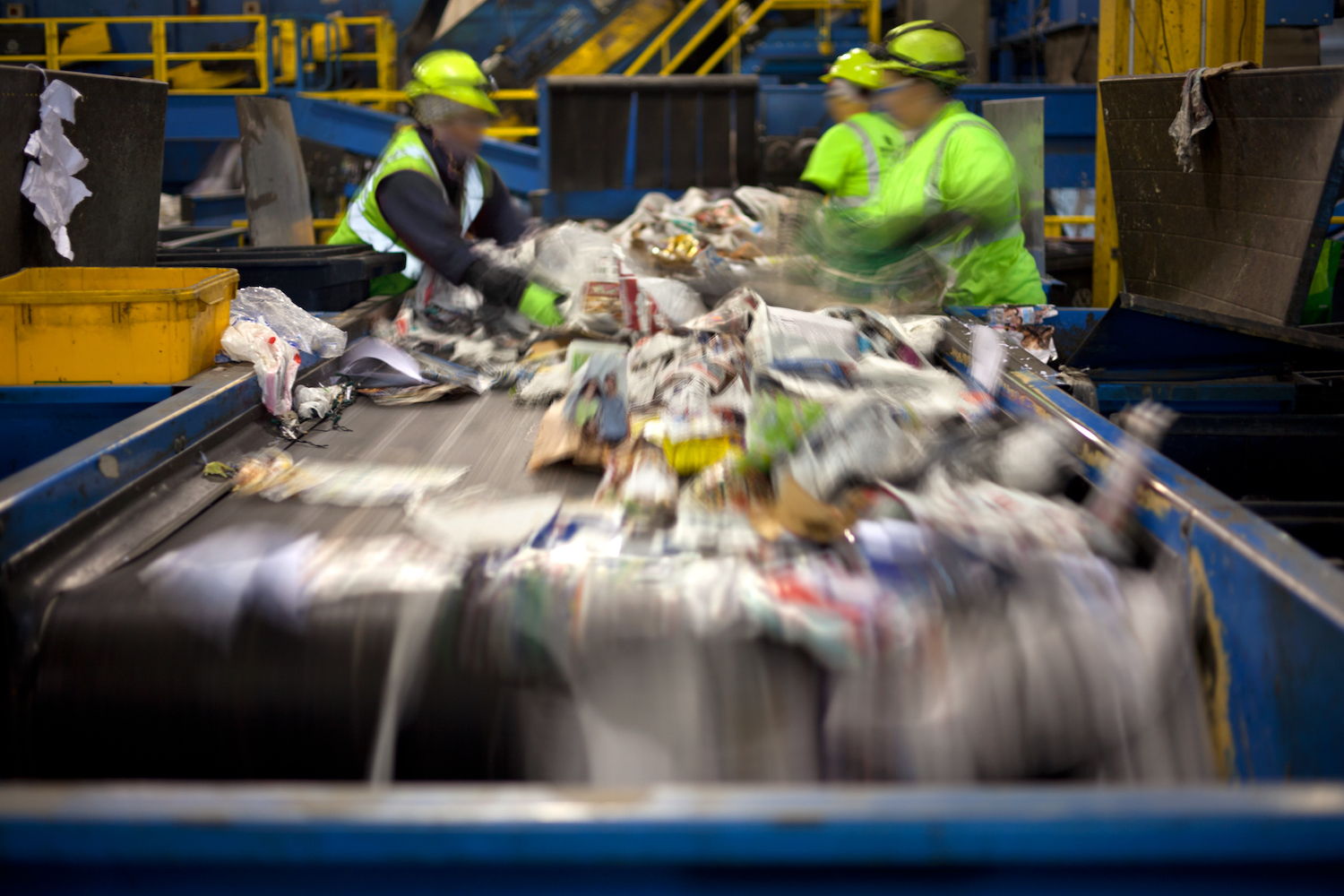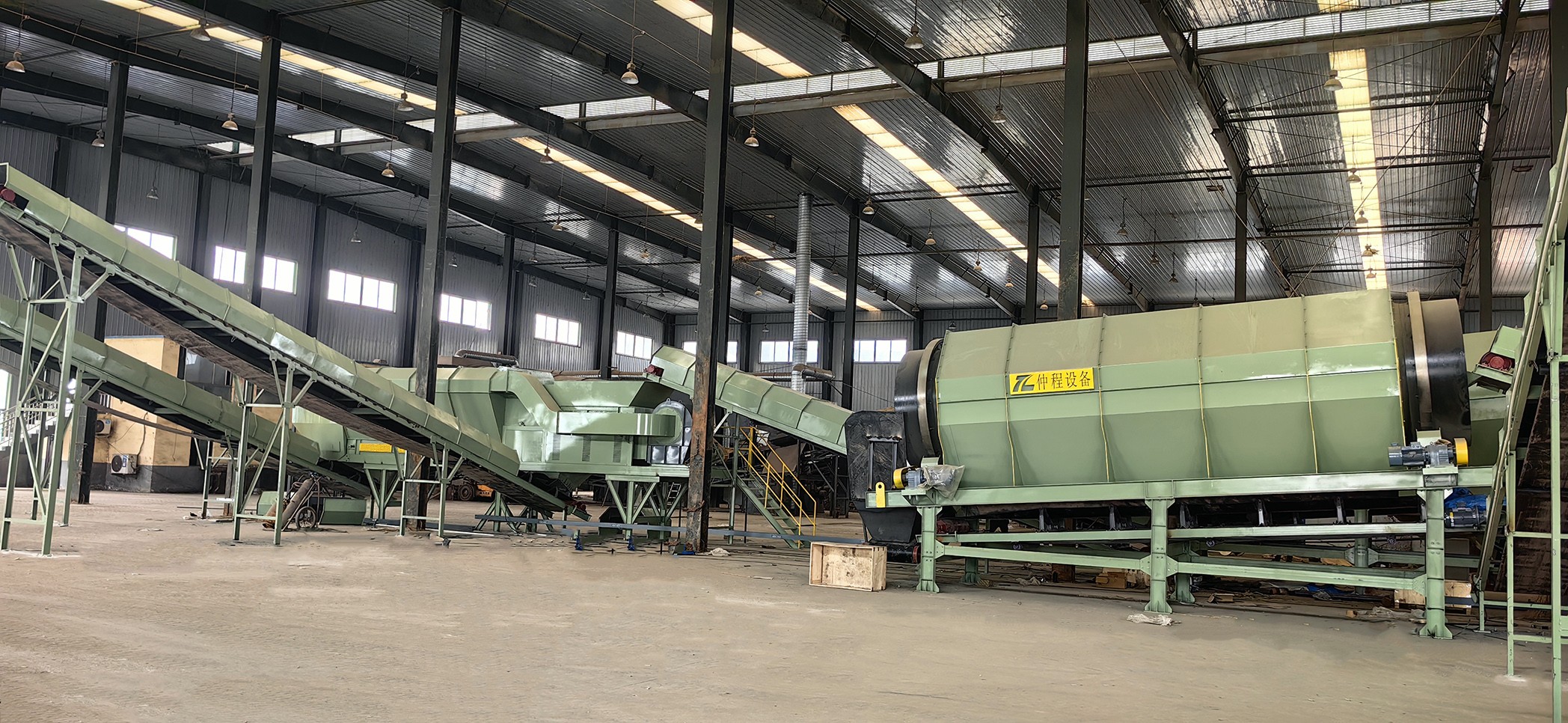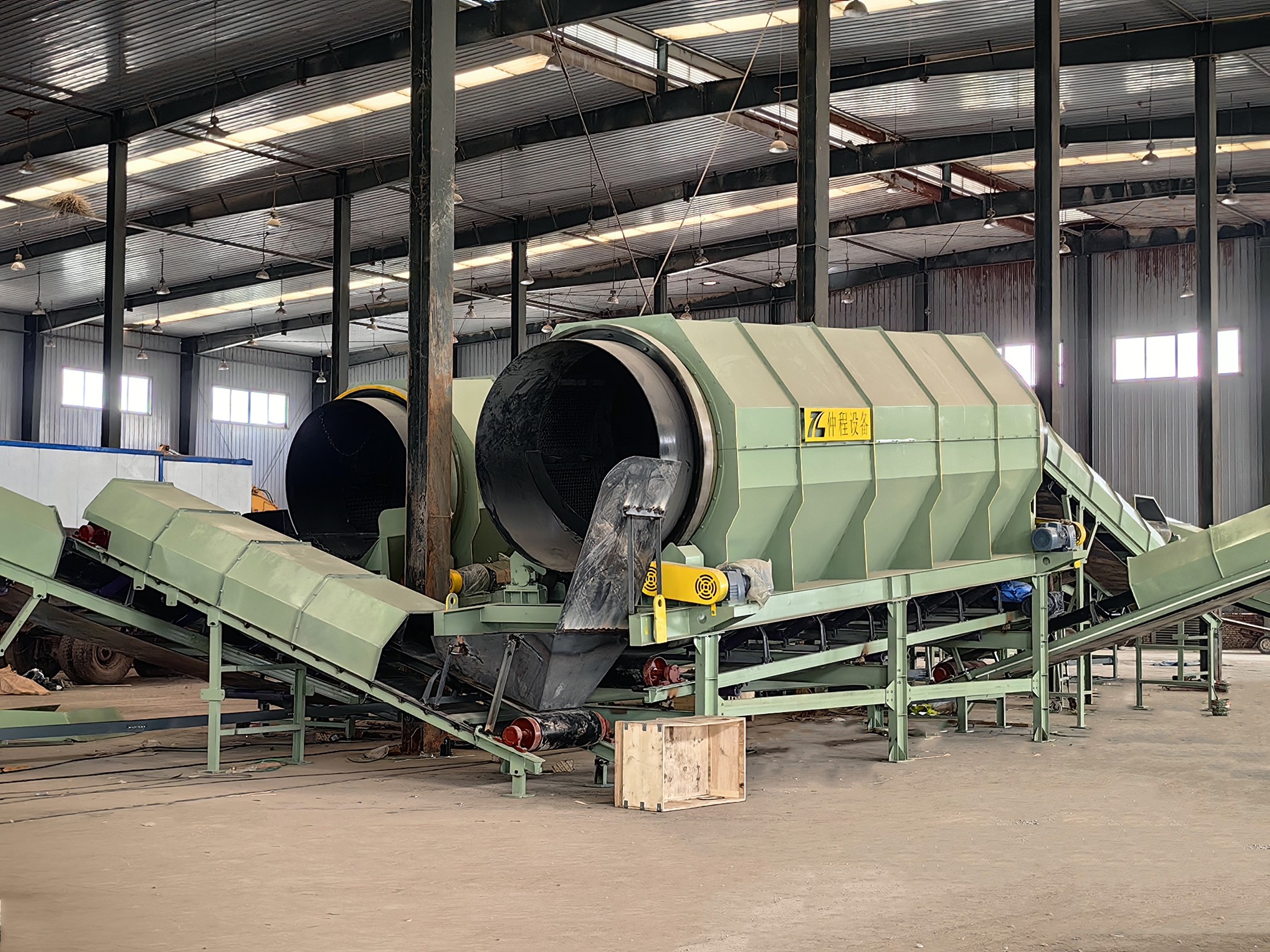The role of trommel screen in sorting waste materials
Waste management is an increasingly critical issue in today’s world, where the efficient sorting and processing of waste materials can significantly impact environmental sustainability. Among the various technologies employed in waste sorting, the trommel screen stands out as a highly effective tool for separating materials based on size. Known for its simplicity, reliability, and versatility, the trommel screen plays a crucial role in enhancing the efficiency of recycling operations, reducing landfill waste, and supporting the circular economy.

What is a Trommel Screen?
A trommel screen is a cylindrical drum with perforated walls, rotating around its axis. As waste materials are fed into the drum, the rotation causes the materials to move along the length of the screen. Smaller particles pass through the perforations and are collected, while larger particles continue to move through the drum until they are discharged. The perforations can vary in size and shape, depending on the specific requirements of the sorting process, allowing for the separation of materials into different size fractions.
The simplicity of the trommel screen’s design is one of its greatest strengths. It operates based on basic mechanical principles, making it highly reliable and easy to maintain. Additionally, the trommel screen can be customized with different screen configurations and drum sizes to accommodate a wide range of waste types and processing needs.

Key Roles of Trommel Screens in Waste Sorting
Efficient Size-Based Separation: Trommel screens are particularly effective in separating waste materials based on size, which is a critical first step in many recycling and waste processing operations. By sorting materials into different size fractions, trommel screens help to streamline subsequent processing steps, such as manual sorting, shredding, or further mechanical separation. This efficiency is especially important in large-scale waste management facilities, where the volume of waste being processed can be substantial.
For example, in a municipal solid waste (MSW) facility, trommel screens can be used to separate organic waste from non-organic materials, enabling more efficient composting or anaerobic digestion of the organics. Similarly, in a construction and demolition (C&D) waste facility, trommel screens can separate fine materials like soil and dust from larger debris, such as concrete and wood.
Versatility Across Various Waste Streams: Trommel screens are versatile and can be adapted to handle a wide range of waste materials, from household garbage to industrial by-products. This adaptability is crucial in waste management, as the composition of waste can vary widely depending on the source and the type of waste being processed. Whether dealing with mixed recyclables, organic waste, or bulky construction debris, trommel screens can be tailored to meet the specific requirements of each waste stream.
The ability to adjust the size of the perforations and the rotation speed of the drum allows operators to optimize the sorting process for different types of materials. For instance, slower drum speeds may be used for heavier materials, while faster speeds can be employed for lighter materials. This flexibility ensures that the trommel screen can achieve high separation efficiency across diverse waste types.
Reduction of Waste Sent to Landfills: One of the primary goals of modern waste management is to reduce the amount of waste sent to landfills, thereby conserving landfill space and minimizing environmental impact. Trommel screens contribute significantly to this goal by enabling the recovery of valuable materials from the waste stream. By separating recyclables and organics from the general waste, trommel screens reduce the volume of waste that needs to be landfilled.
This not only helps to extend the lifespan of existing landfills but also reduces the environmental footprint of waste disposal. Additionally, by recovering materials that can be recycled or composted, trommel screens support the sustainable management of resources and the reduction of greenhouse gas emissions associated with waste decomposition in landfills.
Enhancement of Resource Recovery Processes: Trommel screens play a vital role in enhancing resource recovery by ensuring that materials are accurately sorted based on size. In recycling facilities, this allows for the efficient processing of different materials, such as metals, plastics, glass, and paper. Each material can be directed to the appropriate processing line, where it can be further sorted, cleaned, and prepared for recycling.
In waste-to-energy facilities, trommel screens are used to separate combustible materials from non-combustible ones. This ensures that only materials with high calorific value are sent to the incinerator, maximizing energy recovery and minimizing the production of ash and other residues.
Support for the Circular Economy: The role of trommel screens in waste sorting aligns closely with the principles of the circular economy, which aims to minimize waste and maximize the reuse of resources. By effectively separating materials that can be recycled or repurposed, trommel screens help to close the loop in material cycles, reducing the need for virgin resources and minimizing environmental impact.
In industries such as construction, where large volumes of waste are generated, trommel screens help to ensure that materials like concrete, wood, and metals are recovered and reintroduced into the production cycle. This not only reduces the environmental impact of construction activities but also contributes to the sustainability of the industry as a whole.

Technological Advancements in Trommel Screens
In recent years, there have been significant advancements in trommel screen technology. Modern trommel screens are now equipped with features such as variable speed control, automated cleaning systems, and advanced material handling capabilities. These innovations have improved the efficiency and accuracy of the sorting process, allowing trommel screens to handle more complex waste streams with higher levels of precision.
Variable speed control, for example, allows operators to adjust the drum’s rotation speed to optimize the separation process for different materials. Automated cleaning systems help to prevent material buildup on the screen, ensuring that the trommel operates at peak efficiency even under challenging conditions.
Conclusion
Trommel screens are indispensable tools in modern waste sorting operations, playing a critical role in the efficient separation of materials based on size. Their versatility, reliability, and adaptability make them well-suited to a wide range of waste management applications, from municipal solid waste to construction and demolition debris. As technology continues to evolve, trommel screens will remain at the forefront of efforts to reduce landfill waste, enhance resource recovery, and support the transition to a circular economy. Through their continued use and development, trommel screens will contribute to a more sustainable and environmentally responsible future for waste management.
-
 Trommel screenTrommel screen, also known as drum screens, are widely used in various industries for sorting and separating materials.Get Quote
Trommel screenTrommel screen, also known as drum screens, are widely used in various industries for sorting and separating materials.Get Quote -
 Crop straw double shaft shreddApplications:Biomass Energy Production: Shredded straw can be used as a feedstock for bioenergy plants to produce electricity or heat.Livestock Feed: Reduced-si...Get Quote
Crop straw double shaft shreddApplications:Biomass Energy Production: Shredded straw can be used as a feedstock for bioenergy plants to produce electricity or heat.Livestock Feed: Reduced-si...Get Quote -
 Zhongcheng Air Drum SeparatorAir drum separators effectively separate lightweight materials (e.g., plastics, paper) from heavier materials (e.g., metals, glass). This high efficiency is cru...Get Quote
Zhongcheng Air Drum SeparatorAir drum separators effectively separate lightweight materials (e.g., plastics, paper) from heavier materials (e.g., metals, glass). This high efficiency is cru...Get Quote
-
2024-05-18Jaw CrusherThe working principle of jaw crusher Although the jaw crusher has various structural types, its working principle is the same, that is, the material is crushed ...
-
2024-04-13Wobbler FeederWobbler feeder is a type of feeding equipment that uses rotating elliptical bars, known as wobblers, to separate materials based on size and type before they re...
-
2024-06-07Zhongcheng Air Drum Separator in MSWAir drum separators effectively separate lightweight materials (e.g., plastics, paper) from heavier materials (e.g., metals, glass). This high efficiency is cru...
-
2025-04-21Compact Copper Cable Granulator MachineThe compact copper cable granulator machine is a device used to recycle waste wires and cables. It separates the copper wire from the plastic sheath by crushing...
-
2024-04-13Vibrating FeederA vibrating feeder is a mechanical device used to convey materials, typically in bulk, from one location to another in a controlled manner. This equipment is co...



